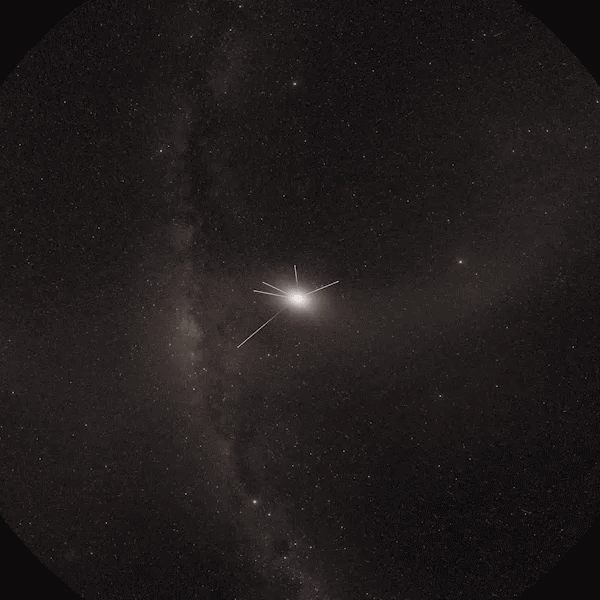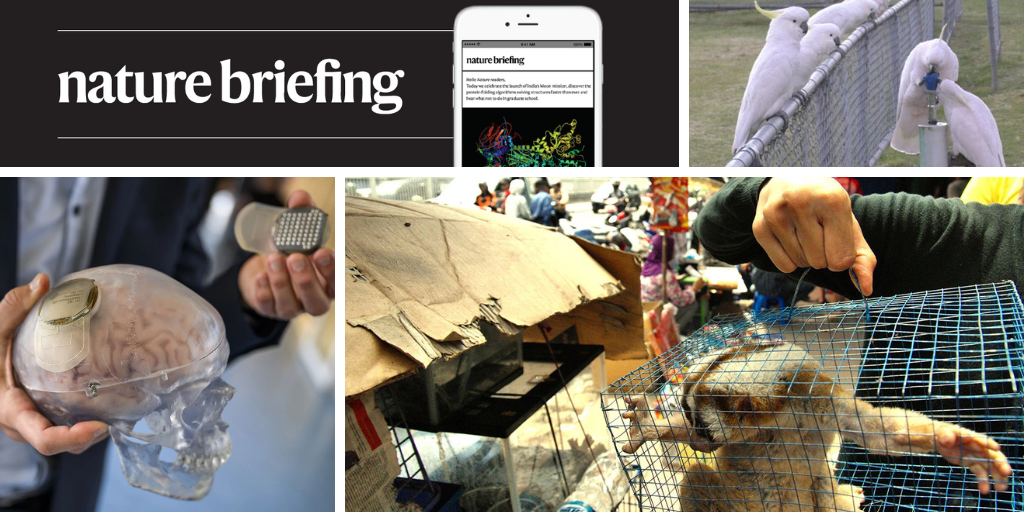You have full access to this article via your institution.
Hello Nature readers, would you like to get this Briefing in your inbox free every day? Sign up here.

The elevated perch of a drinking fountain might help these cockatoos spot potential predators, says behavioural ecologist Barbara Klump. Or, they might just prefer the taste of water from fountains to that from creeks or puddles. (Klump et al/Biology Letters (CC BY 4.0))
A flock of sulphur-crested cockatoos (Cacatua galerita) in western Sydney have learnt to operate drinking-water fountains. The behaviour is made possible by the dexterity of the cockatoos’ feet, which gives them an edge over other brainy birds such as crows (Corvus corone) at this kind of task, says behavioural ecologist Vladimir Pravosudov. The behaviour probably represents a local “cultural tradition”, says Pravosudov; it seems to be spreading through Sydney’s suburbs as the cockatoos learn from one another.
Reference: Biology Letters paper
The first set of ethical principles to govern the use of neurotechnologies, such as brain-computer interfaces, was finalized by delegates at a UNESCO meeting last month. The nine agreed principles focus on protecting users from technology misuse that could infringe on their human rights, including their autonomy and freedom of thought. The recommendations aren’t legally binding, but nations and organizations can use them to develop their own policies. UNESCO member states will vote on whether to adopt the standards in November.
The Center for Scientific Integrity, the non-profit behind Retraction Watch, has launched the Medical Evidence Project — a programme aimed at exposing flawed and fake medical-research papers. “We’re going to find the bad medical evidence that is a threat to quality of life and tell everyone,” says science-integrity consultant and self-described “data thug” James Heathers, who will lead the project. Backed by US$900,000 in funding, the scheme will run for two years to root out flawed papers that skew the meta-analyses used to inform medical guidelines.
The tension is over — at least when it comes to the magnetic strength of the muon. A long-standing disagreement in what physics predicted for the particle and what experiments measured has been resolved by six years of hard graft by physicists at the Muon g–2 experiment at the US Fermi National Accelerator Laboratory (Fermilab), together with major improvements in theoretical calculations. “In the end, the g-2 experimental value is entirely consistent with the standard model,” says theorist Aida El-Khadra, who says she’s “a little sad” that this particular hope of an as-yet-undiscovered world of particles and forces has been dashed. Nevertheless, when it comes to the perfect harmony of theory and experiment, “it’s a triumph”, says theorist Sally Dawson.
Reference: arXiv preprint (not peer reviewed)
Image of the week

Astronomers discovered a spiral structure in the Oort cloud by chance after data were visualized as part of a planetarium show. Movie-makers at the American Museum of Natural History sourced real-world data for the upcoming ‘Encounters in the Milky Way’, narrated by actor Pedro Pascal. “It’s kind of a freak accident that it actually happened,” said David Nesvorny. (Associated Press | 3 min read)
Reference: The Astrophysical Journal paper (© AMNH)
Features & opinion

A slow loris displayed by a vendor near Jatinegara animal market in Jakarta in 2011.Credit: Pacific Imagica/Alamy
Across Asia, scientists and conservationists are continuing the public-health research necessary to understand how viruses can leap from animals to people and potentially give rise to deadly pandemics. Increasingly they are doing this research at live-animal markets and within the vast network of hunters and intermediaries who supply them. But the stresses of the COVID-19 pandemic have weakened global efforts to prevent future outbreaks. Much of the wild-animal trade has been pushed underground. Governments and traders are warier than ever about being transparent. And scientists lack support to study the risk that this multi-billion dollar industry poses.
To celebrate its third anniversary, Communications Engineering asked its guest editors and editorial board members to spill the beans on what they particularly value in an engineering research paper. They agreed that these differ from scientific research papers and helpfully identified some fundamental features, with high-quality data, reproducibility and clarity being just the start.
Today pondering how finding tiny, almost indestructible tardigrades — “like sentient gummy bears” — “felt like a balm against the age of extinction” for science writer Alex Riley. All too often I find that my enjoyment of nature’s boundless beauty is shadowed with the knowledge of what is being lost. Riley reminds me that beauty should also be “a reminder of life’s resilience”.
Let me know what’s currently reminding you of what’s good in the world — or any other feedback on this newsletter — at [email protected].
Thanks for reading,
Flora Graham, senior editor, Nature Briefing
With contributions by Jacob Smith
Want more? Sign up to our other free Nature Briefing newsletters:
• Nature Briefing: Careers — insights, advice and award-winning journalism to help you optimize your working life
• Nature Briefing: Microbiology — the most abundant living entities on our planet — microorganisms — and the role they play in health, the environment and food systems
• Nature Briefing: Anthropocene — climate change, biodiversity, sustainability and geoengineering
• Nature Briefing: AI & Robotics — 100% written by humans, of course
• Nature Briefing: Cancer — a weekly newsletter written with cancer researchers in mind
• Nature Briefing: Translational Research — covers biotechnology, drug discovery and pharma


